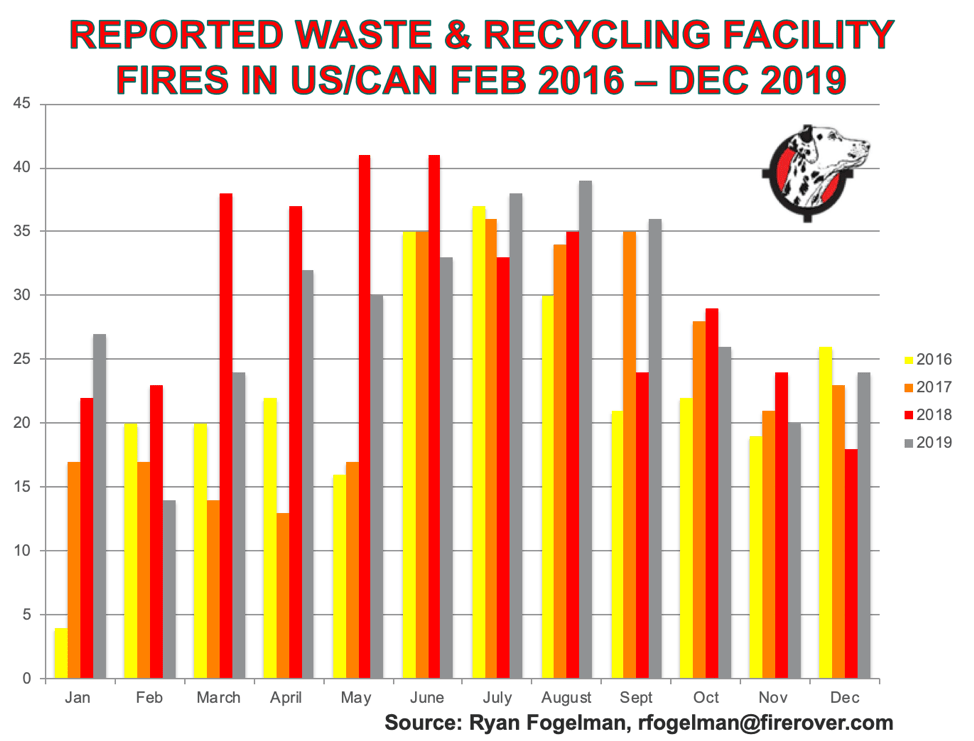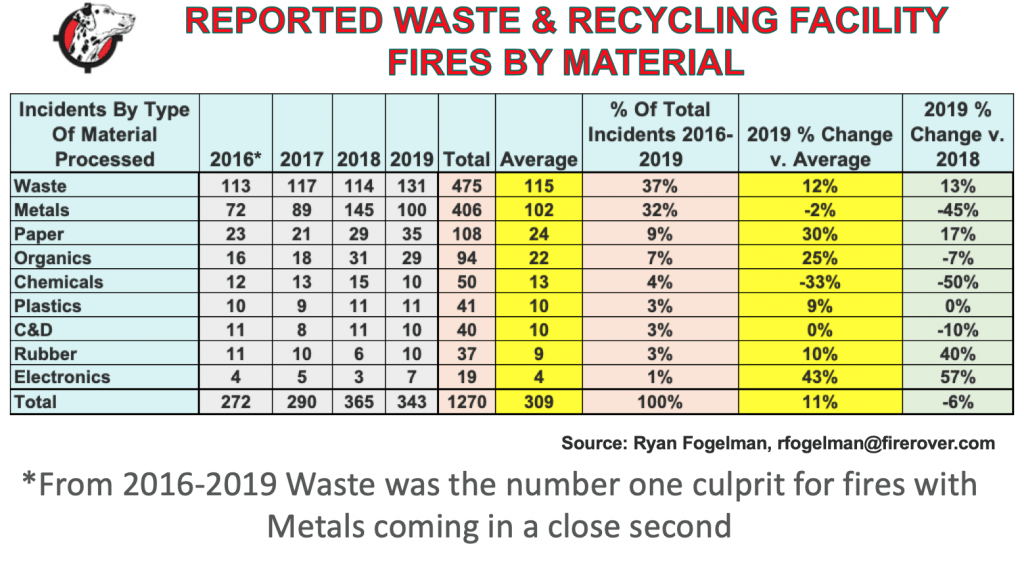Landfill Fires Increase, Know the Risks
Mar 04, 2020
More than 8,000 landfill fires occur each year, ranging from minor surface fires to massive blazes. Due to the potential release of toxic smoke and gases, these fires represent a significant health and environmental concern. Additionally landfill fires result in a cost of approximately $8 million annually in property losses and 30 firefighters injured each year while battling the fires. Fires are caused by a number of factors including arson, deposits of hot wastes, lithium ion batteries, and natural causes such as lightening.
In December 2019 alone, 24 fire incidents were reported at waste and recycling facilities in the U.S. and Canada. Based on information provided by Waste 360, the waste and recycling industry experienced a total of 343 “reported facility” fires in the U.S. and Canada. A “reported facility fire” is defined as a fire that has been reported by the media and occurs at a waste or recycling facility in the U.S. and Canada. Fires that are reported by the media are larger fires requiring the support of on-scene fire professionals and which have affects that can be witnessed by the public. Using reasonable assumptions, the number of “reported fires” extrapolates to a total number of over 1,800 facility fires during 2019, or more than 40 percent of the industry experienced a facility fire in 2019.

The graph above shows the number of “reported fires” per month between February 2016 and December 2019. As illustrated, with the exception of December 2016, the months with the highest number of fires occurred in 2019 (January, July, August, September) and 2018 (February, March, April, May, June, October, November). This graph shows “reported fires” generally increasing from 2016 to 2018 and 2019.

The table above provides a breakdown of “reported fire” incidents by material between 2016 and 2019. It also provides a comparison with 2019 incident numbers versus the three-year average (2016-2019) and 2019 versus 2018 incident numbers. In 2019, fires in waste facilities were up 13 percent over 2018 and 12 percent over the three-year average from 2016 to 2018. Most experts strongly attribute fire increases to the continued influx of lithium-ion batteries into waste and recycling streams. Facility fires disrupt operations, injure workers and emergency response personnel, have the potential to release toxic emissions, and are expensive.
The implementation of an effective Fire Risk Management Plan and Training Program to equip landfill and emergency response personnel on pre-planning and management issues is critical to prevention and mitigation of landfill fires. Contact Senior Project Manager Anne Melia for more information on how Blackstone can provide support in the development of a Fire Risk Management Plan and Training for your facility.

